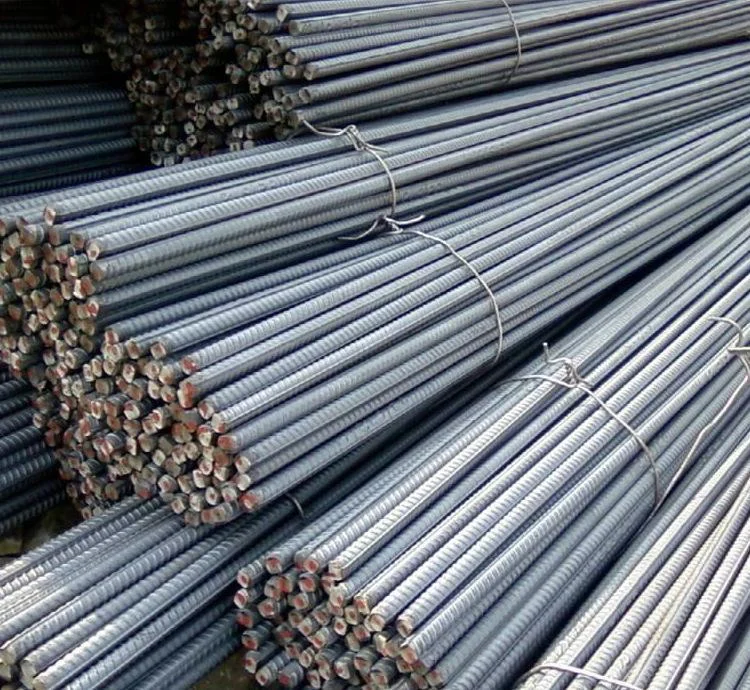A Look at Rebar Types and How Strong They Are
Materials You’ll See in Rebar for Building
Reinforcement bars, or rebars, are a big deal in construction. They give concrete the muscle it needs to stand firm. The stuff they’re made from usually includes carbon steel, stainless steel, and fiberglass-reinforced polymer (FRP). Each one’s got its own vibe for different jobs. Carbon steel rebars? Cheap and tough. Stainless steel rebars fight off rust like champs, perfect for rough spots. Then there’s FRP rebars—light, no rust, and great for special projects.
Why Strength Counts When Picking Rebar
Rebar’s got to be strong. That’s the bottom line. It handles pulling forces and sticks tight to concrete. You pick it based on how much it can stretch before breaking and how much it can take before bending. Plus, it’s got to fit the place it’s going. Get this right, and your building lasts longer and stays safe.
Steel Rebar: What It’s Like and Where It’s Used
What Makes Steel Rebar Tick
Steel rebar’s got some serious pull strength. It’s bendy too—it stretches under pressure without cracking. That’s huge for dealing with quakes or heavy stuff sitting on it. You can shape it or weld it easy, which makes it handy for all kinds of builds.
Why Steel Rebar’s a Win in Construction
Steel rebar’s got a lot going for it. It pumps up how much weight concrete can hold. Its stretchiness means it bends, not breaks, when things get shaky—key in quake zones. Plus, it’s everywhere and doesn’t cost a ton. That’s why big jobs love it.
Where Steel Rebar Falls Short
Steel rebar’s not perfect, though. It rusts if water or chemicals hang around too long. That can mess up the concrete it’s holding together. You can slap on coatings or sealants to help. But in nasty spots like beaches or factories, something like stainless steel might be smarter.
Stainless Steel Rebar: The Fancy Pick
What’s Cool About Stainless Steel Rebar
Stainless steel rebar’s a standout. It doesn’t rust easy and lasts forever. It’s got chromium and other metals mixed in. They make a shield on its surface that keeps rust away, even in brutal places like the coast or chemical plants.
How Rust Resistance Helps Stainless Steel Rebar
That no-rust trick stretches out a structure’s life. It stops corrosion from chewing things up. That means less fixing down the road. For big-deal builds like bridges or water plants, it keeps everything safe and solid.
Where Stainless Steel Rebar Shines
You’ll see stainless steel rebars in tough spots. Think saltwater, chemicals, or wild weather. They’re spot-on for bridges, tunnels, coastal walls, and wastewater setups. Anywhere you need something to last, they’re the go-to.
What Goes Into Picking the Toughest Rebar
How the Environment Shapes Rebar Choices
Where you’re building matters a lot. Wet places—like near the sea or in sewage plants—need rebars that laugh off rust. Stainless steel rebars are ace here. They’ve got that shield that stops corrosion cold. FRP rebars are another pick. They don’t rust and weigh next to nothing, so they’re awesome for harsh chemical zones.
Carbon steel rebars? They’re the usual for easier spots. They’re cheap, but you might need to coat them to keep rust at bay. Matching the rebar to the setting keeps things sturdy for years.
Matching Rebar to the Job
Every project’s different. Quake country loves steel rebars. They bend with the shakes and don’t snap. That pull strength and give make them a favorite. Stainless steel rebars step up for big stuff like bridges or tunnels. There, lasting power’s the name of the game.
For lighter builds or places where electric interference is a no-no, FRP rebars rock. They don’t conduct and shrug off water and chemicals. Knowing what the job needs helps you grab the right stuff for safety and speed.
Juggling Cost, Fixes, and How Long It Lasts
Money’s always on the table when picking rebar. Stainless steel rebars don’t rust and stick around forever, but they hit your wallet hard upfront. That cost can save you on repairs later, though. Carbon steel rebars are easier on the budget at first. But in rough places, they might need touch-ups or extra protection.
FRP rebars sit in the middle. They cost okay and hold up well, though they might not pull as hard as steel. Weighing cash, upkeep, and how long it’ll last gets you the best bang for your buck and a solid build.
What’s Coming for High-Strength Rebar
Fresh Ideas in Rebar Making
New tricks in material design are shaking up rebars. They’re built for today’s big building challenges. Take high-strength micro-alloyed steels—they’re tougher but still bendy. Perfect for giant projects that need serious backbone.
Then there’s hybrid composite rebars. They mix old-school stuff with fancy polymers or fibers. You get strength plus protection from wear and tear. It’s a fix for rust woes and a boost for how well they work. Smart rebar’s popping up too. It’s got sensors to watch a building’s health live. They catch stress, heat changes, or cracks in concrete, so you can fix stuff fast.
Going Green and Long-Term Perks of New Rebars
Building green’s a hot topic now. Advanced rebars cut waste and love recycling. Stainless steel rebars? You can reuse them when they’re done and they’re still good as new. FRP rebars skip extra coatings, so they’re kinder to the planet during making and use.
Over time, tough stuff like stainless steel or composites pays off. You fix less, so you use fewer resources and make less pollution. As going green gets bigger, rebar upgrades will keep pushing building to be strong and earth-friendly.
Frequently Asked Questions
What picks the rebar for a build?
The spot, the job’s needs, cash limits, and how long it’ll hold up all call the shots.
Why’s stainless steel rebar big for sea stuff?
It’s got a rust shield that handles saltwater like a pro.
Can FRP rebars keep up with steel?
They’re rust-proof stars but might not pull as hard as steel. They’re tops for light, special jobs.
How do new rebar ideas help building?
Tougher alloys and sensors make things stronger and let you check on them live.
Want more on what we’ve got? Hit up Qingdao Sunrise New Materials Co., Ltd. They’re stamped with ISO9001:2015 quality creds.








